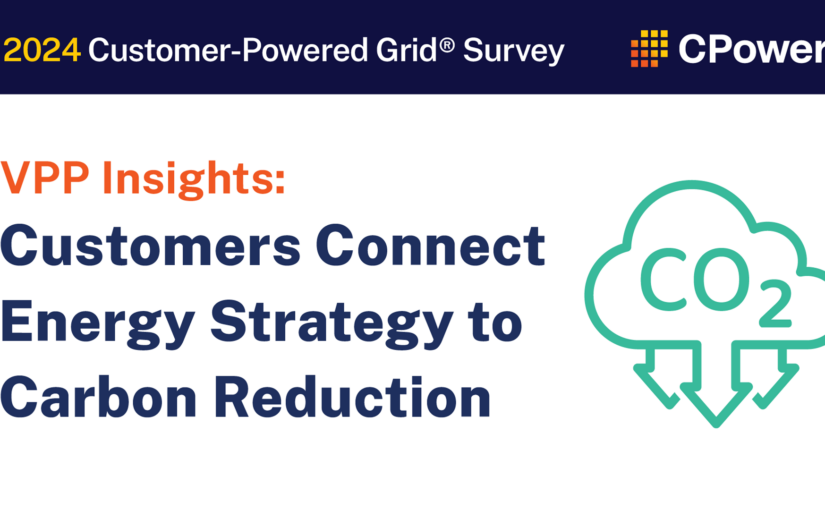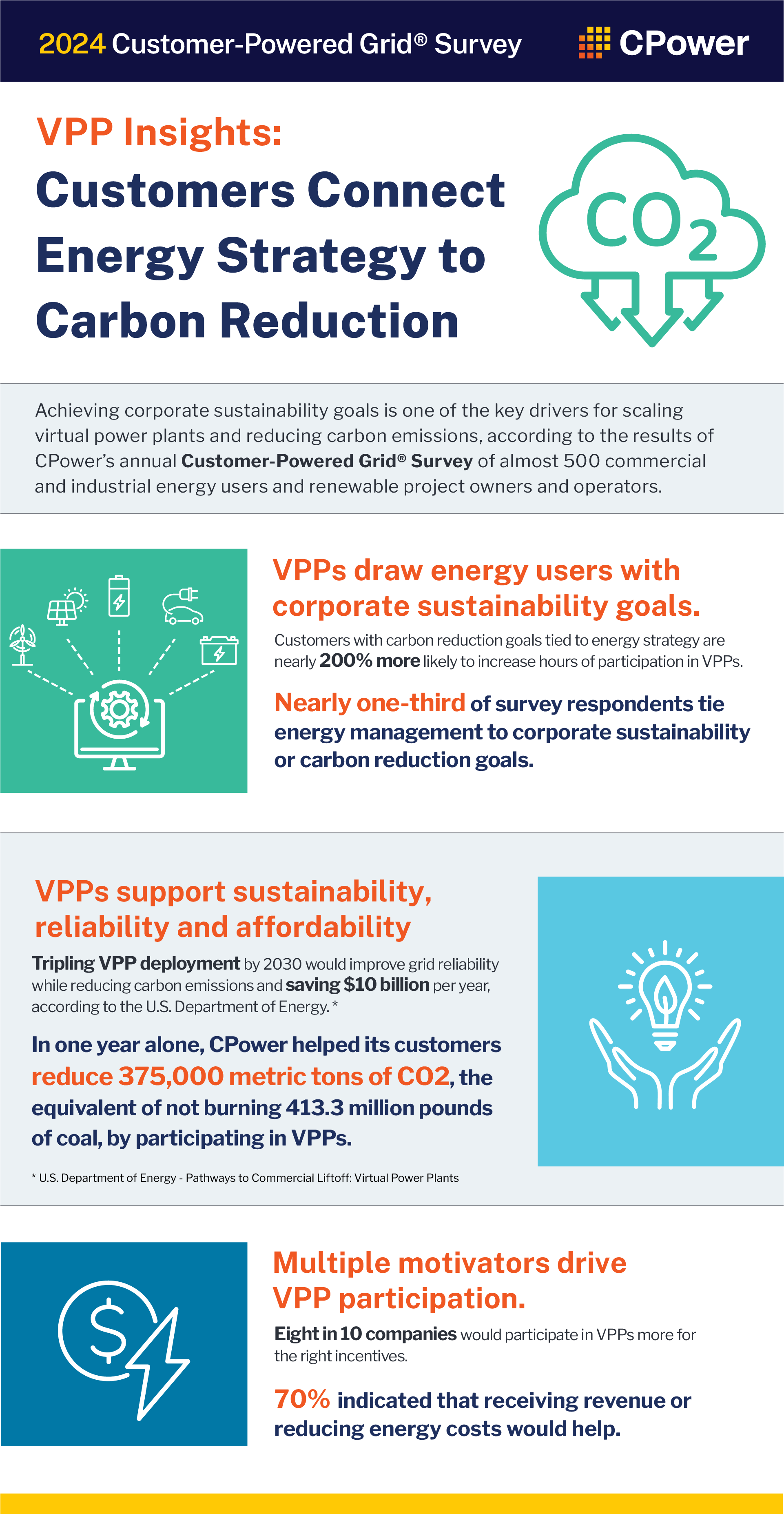Sustainability Goals Spur Virtual Power Plant Projects


Large energy users view virtual power plant projects as ways to help the environment. We could accelerate a cleaner and greener future by harnessing that motivation.
The percentage of commercial and industrial (C&I) customers that use distributed energy resources (DERs) as virtual power plants (VPPs) with the environment in mind has gradually increased over the last few years, according to CPower’s annual Customer-Powered Grid® Survey. Nearly one-third (31%) of organizations now connect their energy management strategy to corporate sustainability or carbon reduction goals, this year’s survey showed.
Achieving environmental goals is increasingly important both for companies and their executives. Six in 10 companies from the S&P Composite 1500 Index include environmental, social and governance (ESG) metrics in measuring CEO performance—nearly triple the 23% that did in 2019
Furthermore, the percentage of S&P 500 companies with a climate metric in their incentive plan has climbed to almost 45%, up from 14% three years ago, representatives from WTW, formerly known as Willis Towers Watson, stated in a recent webinar, according to ESG Dive.
Customers help the environment when they use DERs like small-scale solar arrays, batteries or curtailable load because grid operators avoid burning fossil fuels and emitting associated carbon to generate electricity. In using DERs as VPPs in this way, grid operators save money as customers earn revenue and help their communities by avoiding carbon emissions.
Curtailing load or switching to renewable generation is particularly beneficial for customers, grid operators and communities when demand on the grid peaks. Rather than turning on polluting peaker plants to supply more power to the grid, grid operators pay C&I customers to reduce their electric loads.
Reducing Carbon Emissions with Virtual Power Plants
C&I customers with carbon reduction goals tied to energy strategy are nearly 200% more likely to increase hours of participation in VPPs, according to CPower’s 2024 Customer-Powered Grid® Survey, which drew approximately 500 responses from customers, DER owners and operators and partners.
In one year alone, CPower helped its customers reduce 375,000 metric tons of CO2 by using their VPPs as DERs, across sectors such as retail, data centers, education, healthcare, government and manufacturing. CPower manages nearly 7 GW of flexible DER capacity nationwide, which is equivalent to not turning on 134 peaker plants when demand cannot meet supply.
In addition to embracing the environmental impact of reducing carbon, customers appreciate the financial benefits of VPPs. Eight of 10 survey respondents said they would likely increase their participation in VPPs if the right incentives were in place. When asked to clarify what type of incentives would motivate them, 70% indicated that receiving revenue or reducing energy costs would help.
Understanding the drivers of VPP participation, like the environmental and financial benefits, is vital to meeting the U.S. Department of Energy’s target to triple VPP deployment by 2030, which would improve grid reliability while reducing carbon emissions and saving an estimated $10 billion per year.
Knowing that customers value helping the environment through virtual power plant projects can help us reach the DOE’s goal. If we encourage more C&I energy users to embrace the environmental benefits of VPP, we can help them achieve their goals —while also bringing about the cleaner and greener future that we endeavor to create.
To learn more about how virtual power plant projects can help your organization achieve its corporate sustainability or carbon reduction goals, call us at 844-276-9371 or visit CPowerEnergy.com/contact.


